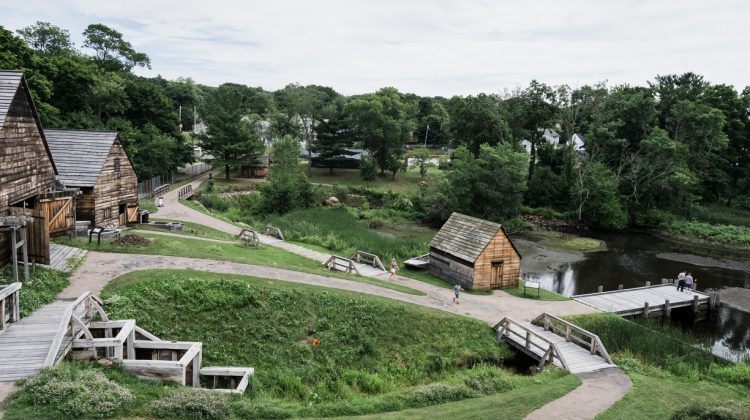SAUGUS — The Saugus Iron Works, which operated from 1646 to 1670, was the first iron works in the country.
Thomas Dexter, born in 1600, is believed to have arrived in the Massachusetts Bay Colony sometime in the late 1620s, alongside the colony’s governor, John Winthrop.
For a large portion of the town’s history, it was mostly farmland. During the time of the Revolutionary War, the town had less than 10 houses, and four decades later, when Saugus separated from Lynn in 1815, a majority of the town was still farmland.
Dexter’s property spanned a whopping 350 acres in the center of town, most of which was farmland, and he was known simply as “Farmer Dexter” to those around town.
Those 350 acres included the land of the Iron Works.
One of Dexter’s neighbors, Robert Bridges, had incorporated a company while overseas in London in 1642, simply dubbed Iron Works Company.
In 1646, Dexter sold the property for 40 pounds sterling to Richard Leader, who turned it into the Iron Works that the town’s residents are familiar with.
At the time, the Iron Works was considered to be the “(center) of life” in the town, boasting a fulling mill, a clothing shop, a dye house, a cider mill, and more.
The neighborhood in which the Iron Works resided might ring some bells for contemporary residents, as it is also the name of a local dining establishment — Hammersmith.
Men working in the neighborhood were paid 1,000 pounds sterling to help establish the Iron Works alongside Dexter and Bridges, but lawsuits ultimately led to the company’s dissolution.
The Iron Works was added to the National Register of Historic Places in 1966. It has been open for the public to enjoy since 1954, when it operated as a private museum, having had various parts restored to their original conditions. It has gone by its new name, Saugus Iron Works National Historic Site, since 1968.

